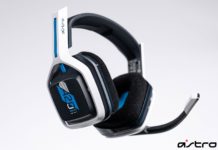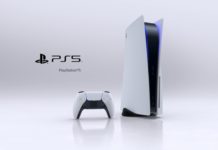Mario and Sonic at the Olympic Games
in an interesting title. One that blends elements of the nostalgic NES Track and
Field and gives it that Wii Sports makeover, and one that takes two of the
bitterest rivals (if you’re old enough to remember the Sega Vs. Nintendo days)
and packs them both into one happy little Nintendo party title. There is a
little more testosterone in this game than compared to say, Mario Party, but
it’s geared more for fans of Wii Sports than the hardcore Mario Strikers Charged
players.

“Why can’t Master Chief qualify for the
Mario & Sonic Olympic games?”
This game, structurally, is built
like Mario Kart. There are single events, a Mission Mode, and even a Circuit
Mode, which strings events together in ascending difficulty. As you beat
different Circuits, you unlock new Circuits and new events, just like Mario
Kart. There are 20 different Olympic events, and on top of that Dream Events and
mini-games, which I’ll get into later. However, some of the Olympic events are
just variations on each other, because “20” includes 100m dash and 400m dash,
and 100m hurdles and 400m hurdles, and so on. Mission Mode will pit your
character against specific challenges, like racing Sonic in the 100m dash. In a
similar vein to SSB, this gives Mario and Sonic a lot of replay value.
This is the first Wii game where I
have actually become tired playing, I’ll admit. After the exhausting track
events, I was sometimes sweating and my arms were beginning to cramp. All of the
foot race events are controlled by pumping both the Wii-mote and the nunchuck up
and down (or just the Wii-mote if you choose) very quickly. Swimming, similarly
is controlled by variant motion controls, such as pumping or sliding the Wii-mote
and nunchuck.

“Bowser
Vs. Peach in the Hammer Throw? …yeh, doesn’t make much sense”
In other weaker events, such as
Fencing or Triple Jump, I began to question how well the motion was implemented.
Fencing is probably the worst event, because it is totally not what you hope for
and it’s played like a very cumbersome and slow Super Smash Bros. fight – minus
the fun. The Long, Triple, and High Jump events are all controlled with a
running pump motion (like mentioned above) and then a flick up with the Wii-mote.
You have to experiment to feel how hard to flick because there is a sweet spot
to get a good jump, and moving too hard or too soft will ruin your score.
The best events are Archery, Table
Tennis and the Dream Events. Archery is the best implementation of the Wii-Mote
in this game, and one of the best thus far in the Wii’s short history. It plays
exactly how you think it should (take that Fencing): pull back on the Wii-mote
holding A and B, hold the nunchuck steadyover the target (it moves with the
wind), and bring the Wii-mote cursor over top the nuchuck’s cursor, and release.
Bullseye. Table Tennis is played almost exactly like Wii-Sports Tennis, where
timing is the key to aiming, except you have a power button and a defense
button; it’s faster paced and it works well. Dream Events are more stylized,
arcadey versions of the Olympic events you’ll be playing. Replacing the track
race, you’ll be running against competitors in a pyramid setting, picking up
power-ups in an almost identical fashion to Mario Kart. It works fantastically
and is a great multi-player game. Other events have variations, but ultimately
place the characters more comfortably in their fantasy settings.
Within those motions you will use
the B button occasionally to jump over a hurdle, or pump up before a sprint, or
raise stamina, or like in the Trampoline event, only use buttons adding only a
Wii-mote flick. In my opinion, it would have been better if Nintendo could have
incorporated better motion control instead of relying on easy button presses.
However, because this game was probably rushed into completion, if they had
opted to go with total motion control, the outcome could have been tragic.
It is an
enjoyable game to play and feels a lot like Mario Kart, in some ways. However,
many of the games just become frustrating in the upper levels of difficulty
(where you’ll be if want to unlock the good stuff). And Skeet Shooting is just a
completely missed opportunity; it should have been from a first-person
perspective. Also, the graphics on that event rival Mario 64 – seriously. The
mini-games that are incorporated into the Olympic Trivia are a clever way to pay
homage to an event but keep it fun at the same time. Between multiplayer,
Circuit, Dream Events and Mission there is a healthy amount of replay value
here. The game also uses Wi-Fi to compare global records, which is a good idea,
even if global play is out of the question.
Review Scoring Details for Mario and Sonic at the Olympic Games |
Gameplay: 7.5
Some of the motions are brilliant, like Archery, but most are mediocre at best,
like Skeet Shooting.
Graphics: 6.5
Strangely, the character models look pretty good, while the environments,
especially in some of the minor events, look like Nintendo 64 games.
Sound: 6.5
The music is basically generic, Olympic sounding music. The voice acting and
sound effects are pretty forgettable.
Difficulty: Medium
The difficulty really ramps up in the Master Class Circuit Mode, but generally
the games are accessible.
Concept: 6.9
Great characters and villains. I wish I could say the same for the levels, but
only small portions of the game are outstanding. The rest is pretty dull.
Multiplayer: 8.0
This game really shines in multi-player, especially in the Dream Events – which
sadly take some time to unlock.
Overall: 7.5
Overall, it’s a great party game with friends; if I was going to rate this game
separately for a single-player experience it would get a 7, and 8 for a
multiplayer game. So, you do the math.









